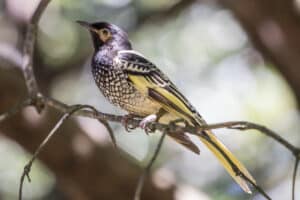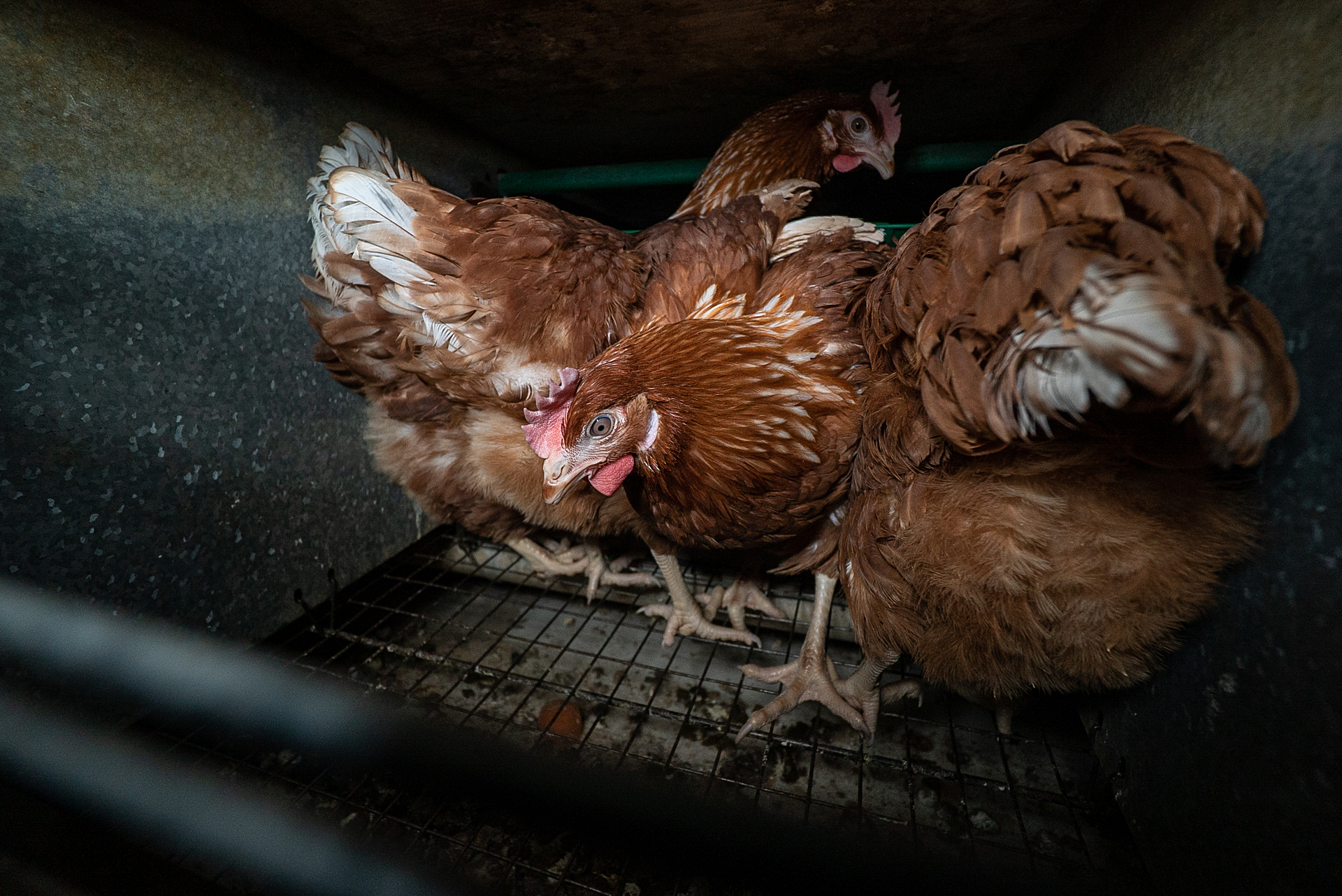Celebrating the Night Gardeners of our Eco-System! Australia is home to over 90 species of bats, each playing a critical role in our ecosystems. From pollinating native flora to foraging on insects, these remarkable creatures help keep our landscapes healthy, diverse and in balance. On International Bat Day, Humane World...
Deep in the forests of New South Wales and Victoria, a warbling song is dying out. The singer of this complex, lilting melody, the regent honeyeater, is Critically Endangered and one of Australia’s most threatened species.
Regent honeyeaters were once found across Australia’s eastern states, occupying vast box-ironbark woodlands where they could travel to feed on ironbark, yellow box, white box and swamp mahogany blossoms. These birds are black, with an intricate scalloped pattern of white and lemon yellow across their wings, breast, back and tail.
As relatively large honeyeaters, they need a lot of energy and spend most of their days foraging for high-calorie nectar, insects and lerps (crystalline honeydew drops produced by insects). Regent honeyeaters gather for foraging events when their preferred eucalypt food trees blossom, converging in an energetic, squabbling flock.
In their ideal conditions, regent honeyeaters are quite resilient—these birds can live for 10 years, reproduce successfully and can adapt to a wide range of food sources and habitats. But extensive clearing of eucalypt forests has destroyed 90% of their habitat, with the remainder left fragmented, weed-infested and plagued by dieback. To make matters worse, honeyeaters have to compete with aggressive noisy miners for nesting sites, and their eggs are preyed upon by currawongs and sugar gliders.
The result is a precipitous decline in the regent honeyeater species, with around 80% of the population lost in just three generations. These birds are considered a flagship species for their box-ironbark forest homes. By recovering regent honeyeaters, we can benefit a variety of threatened plants in this habitat as well as squirrel gliders, swift parrots and brush-tailed phascogales.

Breeding programs are seeing great success, with hundreds of captive-bred birds joining wild populations and building the genetic diversity of the species. The honeyeater’s song, famously becoming lost in the wild, is being taught to young birds at the Taronga Conservation Society breeding centre with recordings and “tutors”, adult birds captured from the wild and housed near fledglings to guide their songs.
The key to saving the regent honeyeater is to save their threatened habitat. More protection is needed to conserve box-ironbark forests for nesting sites, feeding grounds and refugia during environmental fluctuations.
Landholders have a critical role to play—around 65% of honeyeater sightings have been on properties, and many old-growth trees for nesting sites and food sources occur on private land.
Time is running out for these remarkable birds, but it’s not too late to save them. We need stronger laws for nature and more dedicated support for Australia’s threatened species.
If you’d like to learn more about HSI Australia’s work in improving the future of our natural spaces, head to our Extinction Fighters campaign.


